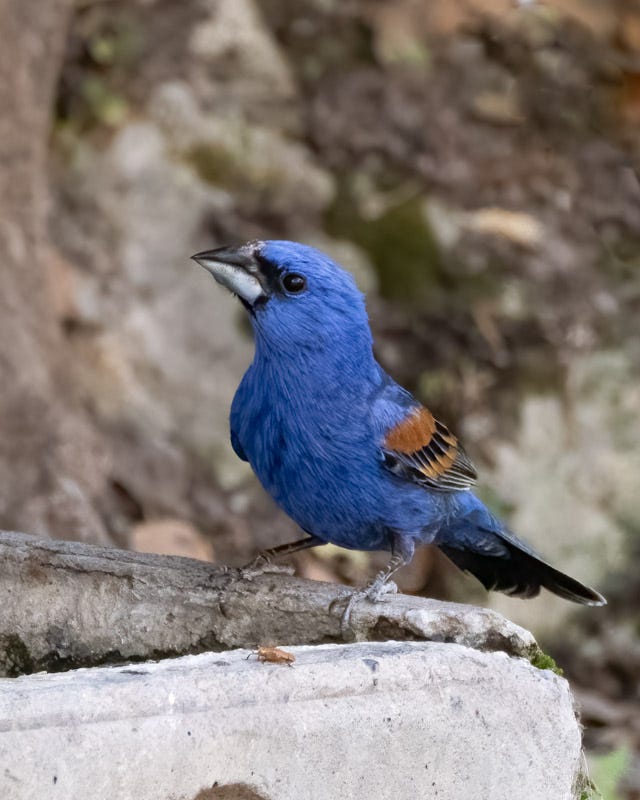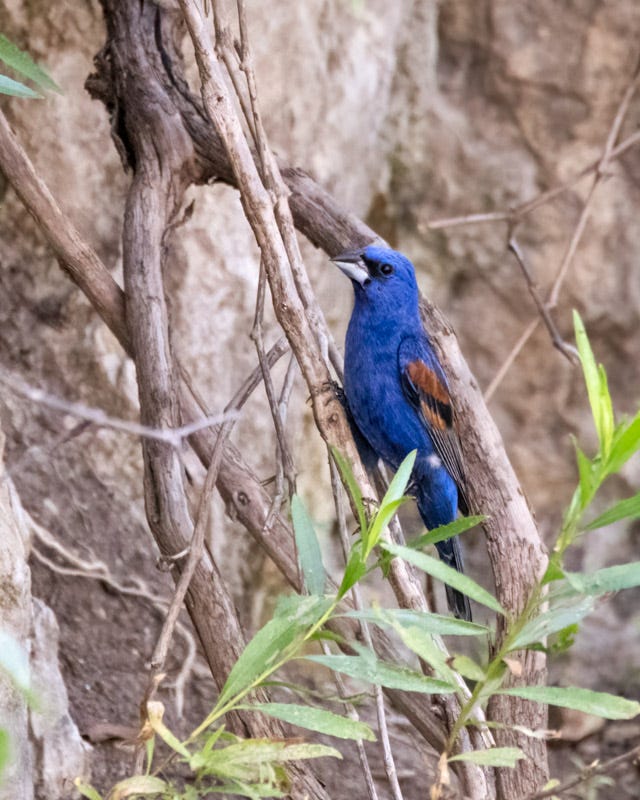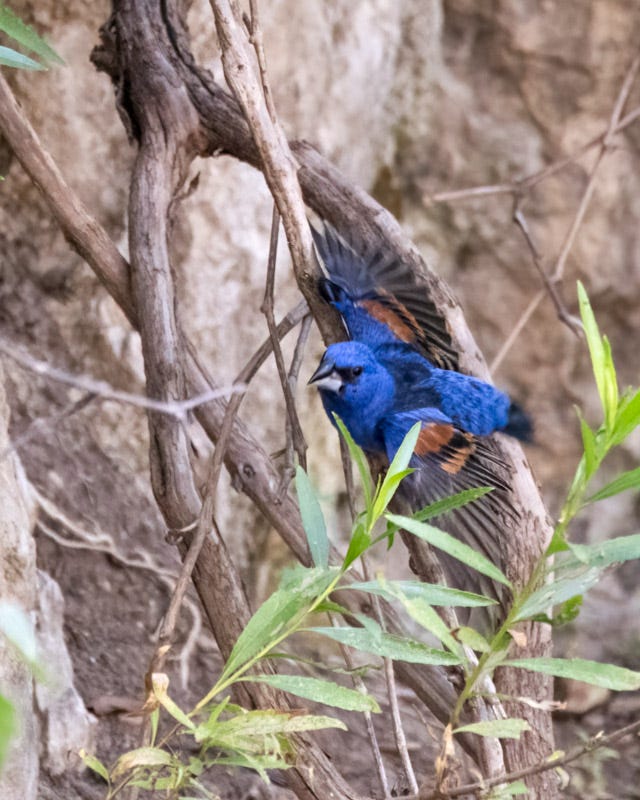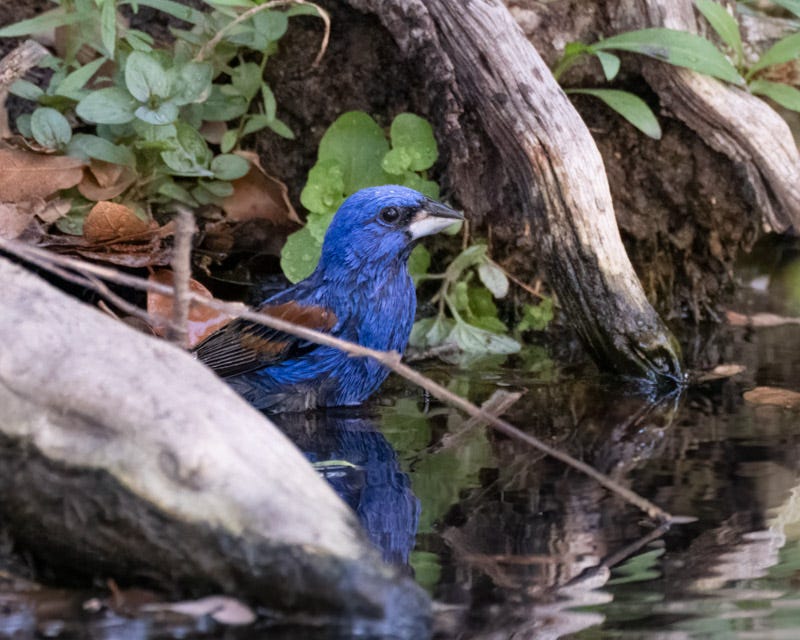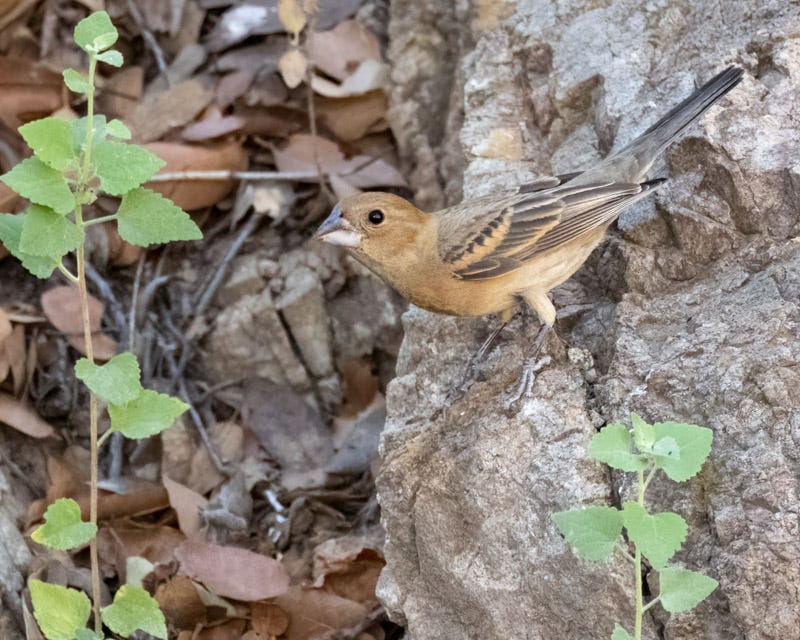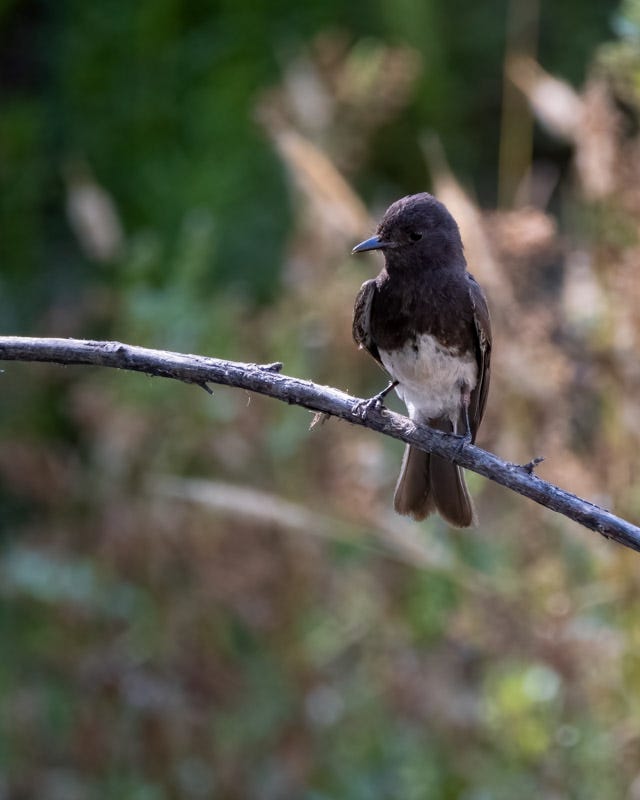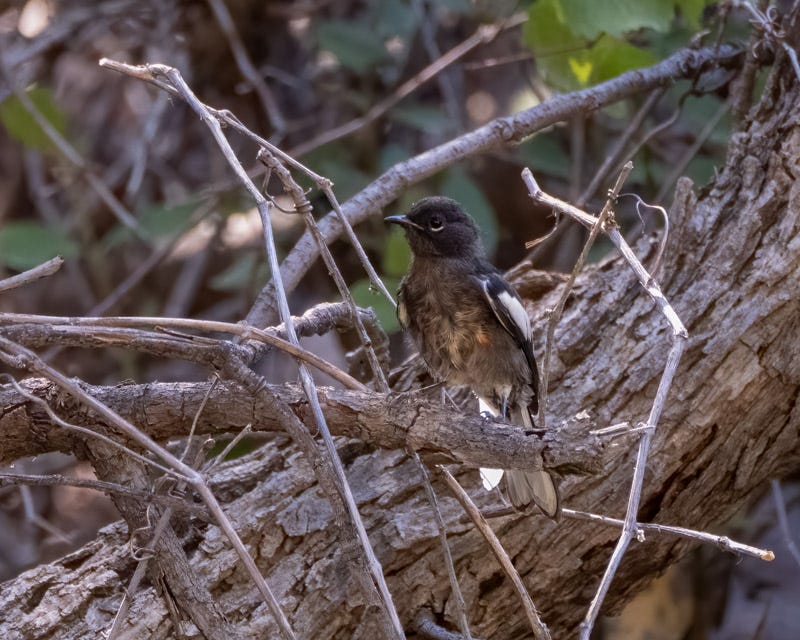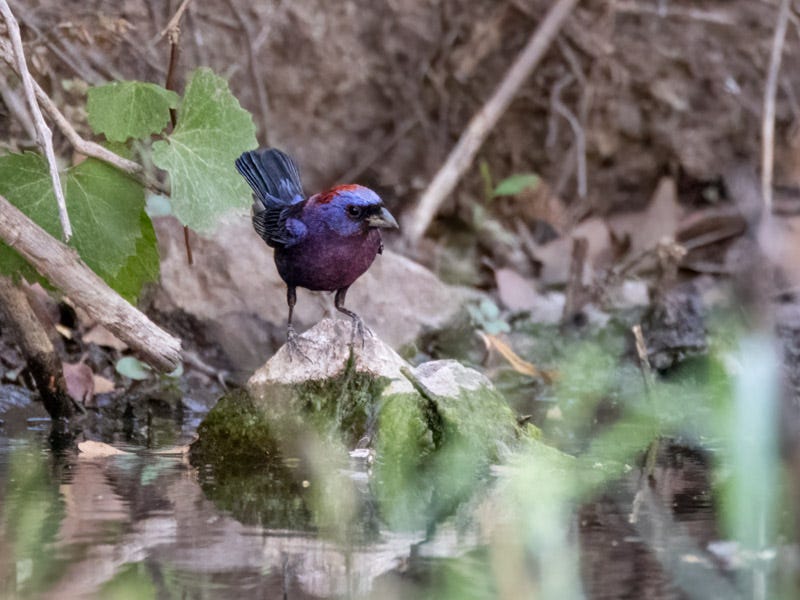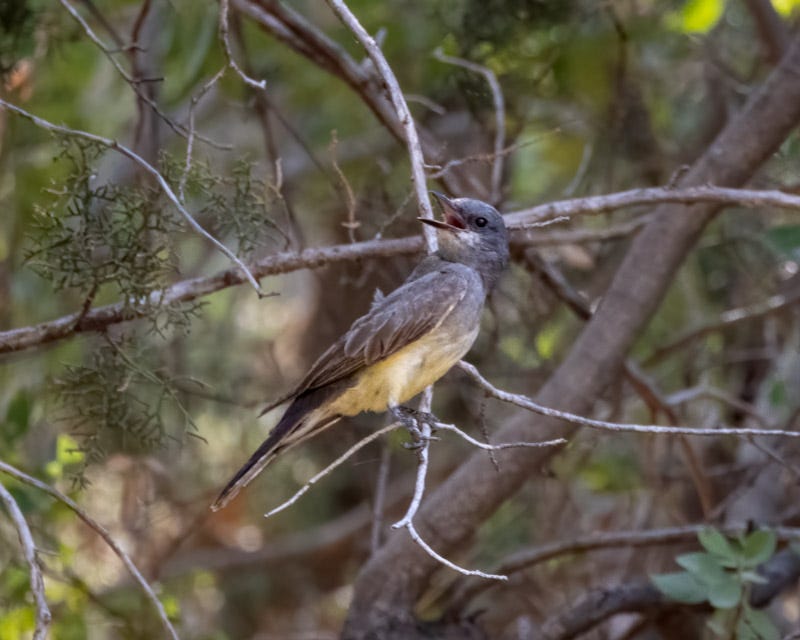A Visit to Test Another of the Sky Islands
On the northern edge of the Santa Ritas
The week following my visit to Ash Canyon in the Huachucas, I visited a new site for me along the northern edge of the Santa Rita Mountains. A dirt road cuts through from the Madera Canyon Road running along the mountains all the way to Arizona Highway 83. https://www.fs.usda.gov/recarea/coronado/recarea/?recid=25736 At one point the road crosses Box Canyon Creek and that is where my friends and I sat for a few hours one recent afternoon. We found a spot near a water seep and waited for the birds to come in for a drink. One of the first birds we saw was an Arizona Woodpecker, a bird I had seen in the other Sky Islands.
Other birds took turns coming to the water. Some would cling to the roots hanging down from the cliff's edge. Others moved across the rock face of the cliff. Others, like the Blue Grosbeak below, dropped to the man-made edging of the seep in order to access the water.
The Blue Grosbeak moved around the edge of the water. In each spot, his brilliant blue color was so showy. Despite that bird looking very blue, did you know that its feathers are not actually blue? They are not pigmented blue. What you are seeing is based on the structure of the feathers, as the Smithsonian explains: https://www.si.edu/stories/when-blue-bird-not-blue#:~:text=The%20answer%20to%20this%20question,thing%20as%20a%20blue%20bird.
The Blue Grosbeak in the photo above was waiting above the water on overhanging branches. In the photo below, he was taking off from that same perch and heading towards the water. The silvery bill and the chestnut colored wingbars complement the rich blue color. And he sure looks very blue!
Because we were sitting in chairs, there were times that birds were hidden by brush and we just could not get up to find a more open view of the birds without risking scaring the birds off. When the Blue Grosbeak landed in the water some weeds blocked much of my view. I leaned sideways as far as I could to get a shot of him bathing and drinking. I hoped to get a bit of the reflection of the Grosbeak in the water. For another explanation of how this bird's feathers are not actually colored blue, go to https://www.acsh.org/news/2016/06/30/blue-birds-arent-blue-this-is-how-they-fool-you
As with many other female bird species, the female Blue Grosbeak does not have the rich color of the male Grosbeaks. She does have the same profile, same bill, and same shape of the male, but is described as having a "rich cinnamon-brown" color- nothing blue to see!
A Black Phoebe spent much time at the water, capturing various insects that were flying around the wet area.
Another black and white bird kept returning to the water. This is a juvenile Painted Redstart, but you don't see any red on its belly as you would with both male and female adults. You can see some brown and light colors beginning to show on its breast. This juvenile does have the white wing bars and white crescent under its eye as an adult would. Its red feathers will grow in soon.
This juvenile Painted Redstart is already a proficient hunter. As the adults do, it flashes its tail feathers and its wings when hunting. The burst of white startles insects who, because of their reactive movements, become visible to the Redstart who can then quickly grab the insect. Learn more about this southwestern specialty from Tucson Audubon: https://tucsonaudubon.org/bird_profile/painted-redstart/
I got a very quick but awkward look at one of the more beautiful birds of Arizona's summers, the Varied Bunting. It dropped down on a rock, quickly got a drink, and then flew away. https://tucsonaudubon.org/bird_profile/varied-bunting/
Compared to the stunning blue of the other birds at this location, the Cassin's Kingbird is not as showy. The large flycatcher with gray and yellow plumage looks similar to other summering flycatchers in our area, the Ash-Throated and the Tropical. But the Cassin's Kingbird has a telltale white cheek patch, or mustache.
There were many other birds at the water seep. The next email will feature the colorful Hooded Oriole that we saw there.



